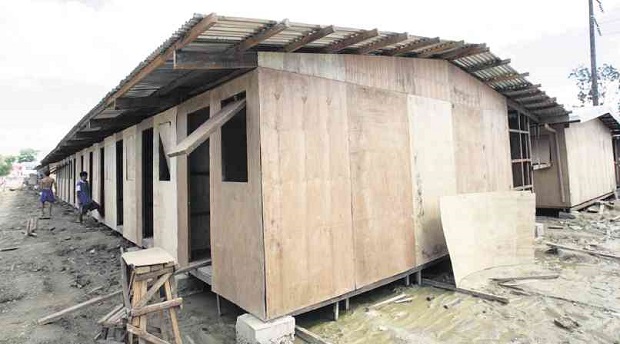Bunkhouses meant to be temporary, says forensic architect
In light of media reports of overpriced and substandard bunkhouses created for families whose houses were damaged or destroyed by Supertyphoon “Yolanda,” Inquirer Property asked construction experts to describe what bunkhouses really are, and how they should be built.
Forensic architect Froilan Hong explained that bunkhouses are used in construction sites as temporary shelter, particularly as sleeping quarters, for workers. These bunkhouses come with a common toilet, shower and cooking facilities usually in an adjacent structure to prevent fires and better handle sanitation standards.
Hong added that because of the temporary nature of the structure, bunkhouses are co-terminus with the existence of the construction site.
“I think the authorities constructed the bunkhouses (for Yolanda survivors) with a set time when they would eventually move to their permanent homes,” Hong said. “The temporary shelters that international organizations put up in areas of conflicts such as in Africa have longer holding time and will have a different set of standards,” he added.
“In assessing the adequacy of the standard of construction of the bunkhouse, we must look at the time frame of how long the people will be temporarily housed,” Hong stressed.
Clarification
Meanwhile, urban planner and architect Felino Palafox Jr. e-mailed
Inquirer Property a clarificatory statement stating that he did not accuse the Department of Public Works and Highways of corruption in the construction of the controversial bunkhouses, and that he only commented on the shelters as being undersized and substandard based on international experience and standards. Afterward, he also sent the following recommendations for the structural rehabilitation of Tacloban City, one of the worst-hit urban centers:
• The use of concrete roof decks for most structures, instead of GI roofing on steel trusses;
• Spanish, Mediterranean or Italian architecture to be adopted for structures along the coastlines, the adoption of sloped or inclined concrete slabs where clay tiles could be fastened or installed;
• For all steel roof framing systems, use two gauges higher and increase sizes for all metal fasteners.
• New structures should be built perpendicular or diagonal to the shoreline where wind gustiness would be “sliced.” Round or oval structures are also recommended.
General recommendations
Palafox’s general recommendations to counteract the effects of supertyphoons and massive earthquakes include:
1 Review of the National Structural Code of the Philippines. Particular focus should be on amendments pertaining to wind velocity (should be revised from the current gustiness of 250 kilometers per hour to around 400 kph. Yolanda’s maximum speed reached 370 kph, according to the Philippine Atmospheric Geophysical and Astronomical Services Administration, and earthquake intensity, where the scale of 8. should be revised up to intensity 9.0.
2 Danger zones or no-build zones of 50 meters or more should be implemented along the eastern coastline fronting the Pacific Ocean and the China Sea.
3 A “bridal registry” type of rehabilitation where foreign contingents could choose what services they would render to typhoon-ravaged municipalities and cities
4 Priority services needed in Tacloban include food, shelter, livelihood and stress debriefing for displaced and affected families
5 Political affiliations should not intervene in providing basic services for the affected people.
6 Structural audit should be done for all buildings affected by typhoons and earthquakes. Retrofit buildings with minor structural damage. Demolish badly damaged buildings to avoid loss of life and property.
7 Tacloban City is approximately less than 1 m above sea level. Some areas like the airport, the urban center, the public market and other areas must be relocated to higher ground.
8 Tacloban City is also the center of commerce and trade of Region 7. It also plays a major part in trading from the Bicol Region to Southern Mindanao as far as General Santos City. Thus, the imperative to protect these areas from forces of nature.
9 There are 32 countries in Tacloban City currently participating in the relief efforts. Almost all concentrate on food, shelter and basic services. But only a few concentrate on the future livelihood of the affected citizens. Rural areas, in particular, need new banca (boats), nets, paddles and farming equipment to replace the ones they lost to the typhoon.

